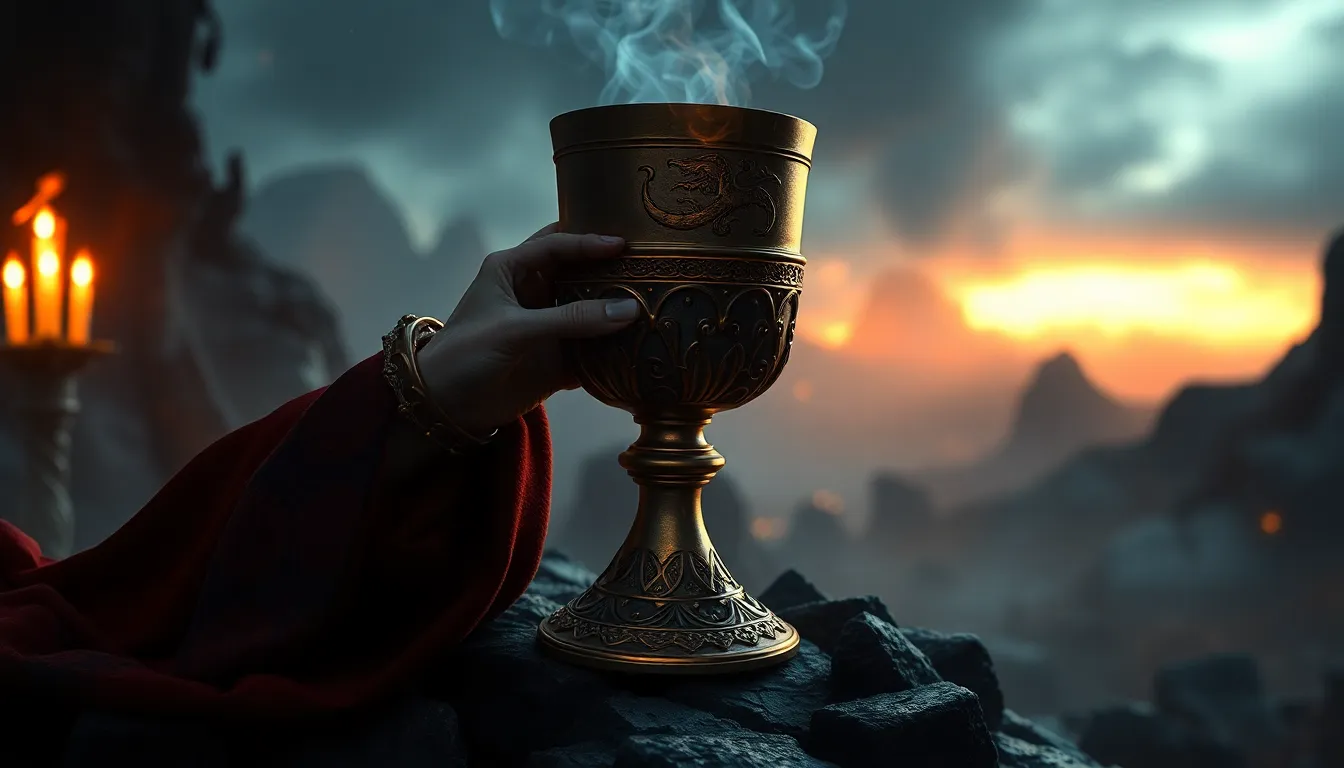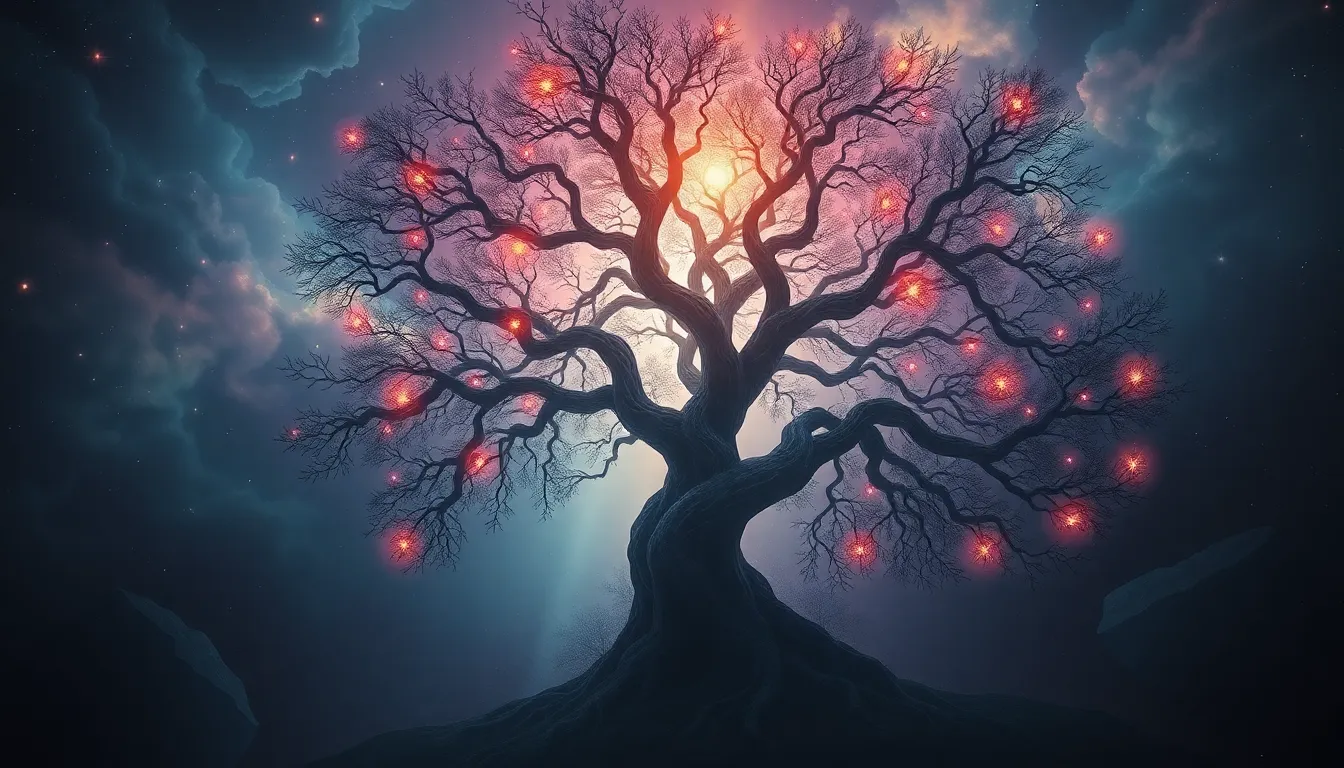The Cursed Chalice: Drinking from the Cup of Doom
Introduction to the Myth of the Cursed Chalice
The legend of the Cursed Chalice weaves a tale of mystery, danger, and the supernatural that has captivated audiences for centuries. Originating from various cultural narratives, this myth typically involves a chalice or cup that brings misfortune and doom to those who dare to drink from it. The allure of the chalice lies not only in its cursed nature but also in its representation of temptation and power, making it a compelling symbol across folklore.
Throughout history, the chalice has appeared in numerous cultures—from the Holy Grail of Christian mythology to the goblets of ancient pagan rituals. Each iteration of the chalice carries with it a weight of significance, serving as a reminder of the fine line between divinity and destruction.
Historical Accounts of Cursed Objects
Cursed artifacts have fascinated humanity for ages, with numerous accounts of objects that allegedly bring misfortune to their owners. From the infamous Hope Diamond to King Tutankhamun’s tomb, history is replete with stories of cursed items that have led to a series of unfortunate events.
- The Hope Diamond: This stunning blue diamond has been linked to a number of tragedies, including deaths and financial ruin.
- King Tutankhamun’s Tomb: The curse of the pharaoh purportedly claimed the lives of several individuals involved in the tomb’s discovery.
- The Bell Witch’s Rock: A stone said to bring misfortune to those who possess it, tied to the infamous Bell Witch haunting.
When compared to the Cursed Chalice, these artifacts share a common theme: a history of malevolence and the belief that they bear a supernatural weight. The Cursed Chalice stands out, however, due to its symbolic resonance in both religious and secular contexts.
The Symbolism of the Chalice in Mythology
The chalice serves as a potent symbol in mythology, representing power, temptation, and the duality of life and death. In various narratives, it embodies the allure of forbidden knowledge or the intoxication of power. In religious contexts, the chalice often symbolizes communion and sacrifice, as seen in the Christian tradition of the Last Supper.
Moreover, the chalice frequently appears in tales of heroism and tragedy, where it becomes a double-edged sword for those who seek it:
- Power: It can bestow great strength or influence, but at a cost.
- Temptation: Those drawn to it may find themselves ensnared by their desires.
- Doom: Drinking from the chalice can lead to a fate worse than death.
The Folklore Surrounding the Cursed Chalice
The Cursed Chalice is steeped in folklore, with various stories and regional variations amplifying its legend. Often, these tales feature a key figure—a noble, a knight, or a commoner—who encounters the chalice, leading to their downfall. Some notable stories include:
- The tale of a greedy king who sought eternal life through the chalice, only to suffer eternal torment.
- A wandering knight who, after drinking from the chalice, was cursed to roam the earth forever, seeking redemption.
- The story of a peasant who accidentally stumbled upon the chalice and faced dire consequences for his unintentional transgression.
Each of these narratives serves as a cautionary tale, warning against the dangers of greed, ambition, and the pursuit of power.
Scientific Perspectives on Curses and Superstitions
While the concept of the Cursed Chalice is steeped in myth, it invites analysis through scientific lenses, particularly psychology and sociology. Belief in curses often stems from:
- Psychological Phenomena: The placebo effect can lead individuals to perceive misfortune or fortune based on their beliefs.
- Sociological Influences: Cultural narratives shape our understanding of luck and curses, impacting behavior and perception.
Real-life examples of the placebo effect highlight how belief alone can influence outcomes, suggesting that the power of the mind plays a critical role in the experience of cursed objects.
The Cursed Chalice in Popular Culture
The Cursed Chalice has found its way into popular culture, appearing in literature, film, and television. Notable examples include:
- Literature: Various fantasy novels depict chalices imbued with magical powers, often with dire consequences for those who use them.
- Film: Movies like “Indiana Jones and the Last Crusade” explore the themes of the chalice as a source of both power and peril.
- Television: Various shows have incorporated the chalice into narratives involving curses, quests, and supernatural encounters.
These portrayals have significantly influenced public perception, often romanticizing the idea of the cursed chalice while simultaneously reinforcing its ominous reputation.
The Modern-Day Quest for the Cursed Chalice
The allure of the Cursed Chalice has inspired many treasure hunters and archaeologists to embark on quests to find it. These modern-day adventurers often face numerous challenges:
- Historical Research: Understanding the origins and stories surrounding the chalice.
- Field Exploration: Searching locations tied to the legend, often fraught with danger.
- Ethical Considerations: Navigating the moral implications of removing artifacts from their historical context.
The search for the Cursed Chalice raises questions about the preservation of cultural heritage versus the desire for discovery.
Personal Anecdotes: Encounters with the Cursed Chalice
Many individuals claim to have experienced the curse of the chalice firsthand. Here are some common themes from these personal anecdotes:
- Unexplained Misfortunes: Owners report a series of unfortunate events following their encounter with the chalice.
- Psychological Impact: Many describe feelings of anxiety or fear after drinking from the chalice or even possessing it.
- Family Histories: Some stories involve family curses that seem to circulate around the chalice.
These anecdotes contribute to the ongoing mystique of the chalice, blurring the lines between myth and reality.
Breaking the Curse: Myth or Reality?
Various cultures have rituals and practices believed to nullify curses. These can include:
- Cleansing Rituals: Involving water, salt, or herbs to purify the object.
- Spiritual Guidance: Seeking help from a shaman or spiritual leader to lift the curse.
- Community Support: Engaging in communal prayers or ceremonies to counteract the curse.
The effectiveness of these practices remains a topic of debate, illustrating the broader cultural beliefs surrounding curses and their resolutions.
Conclusion: The Enduring Fascination with the Cursed Chalice
The Cursed Chalice continues to captivate our imaginations, a powerful symbol of temptation and consequence that transcends cultural boundaries. Its enduring presence in folklore, literature, and modern quests reflects humanity’s fascination with the supernatural, the risks of ambition, and the consequences of our desires.
As we explore the stories and legends surrounding the chalice, we are reminded of the broader implications of curses and the beliefs that shape our understanding of luck and misfortune in our lives.



